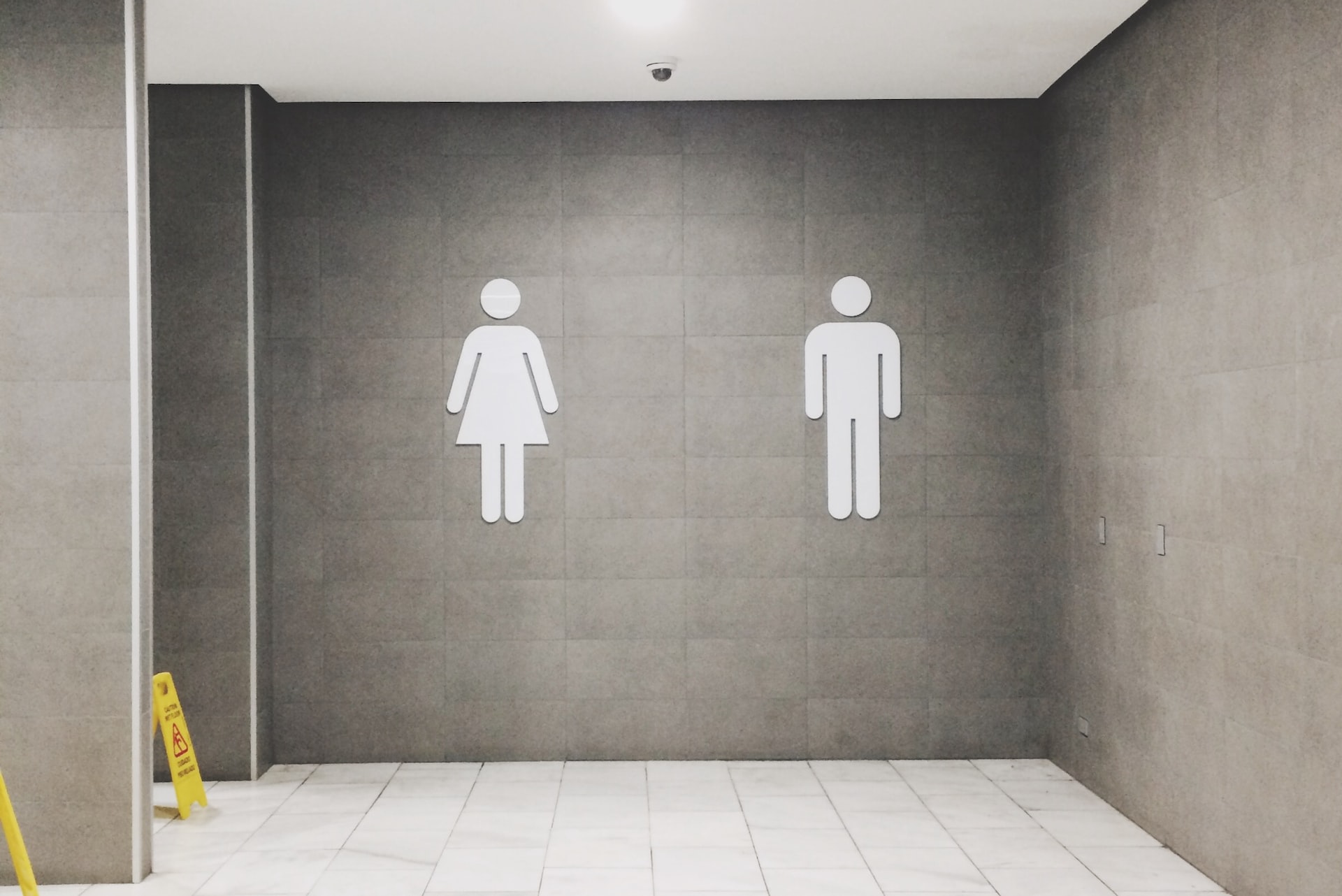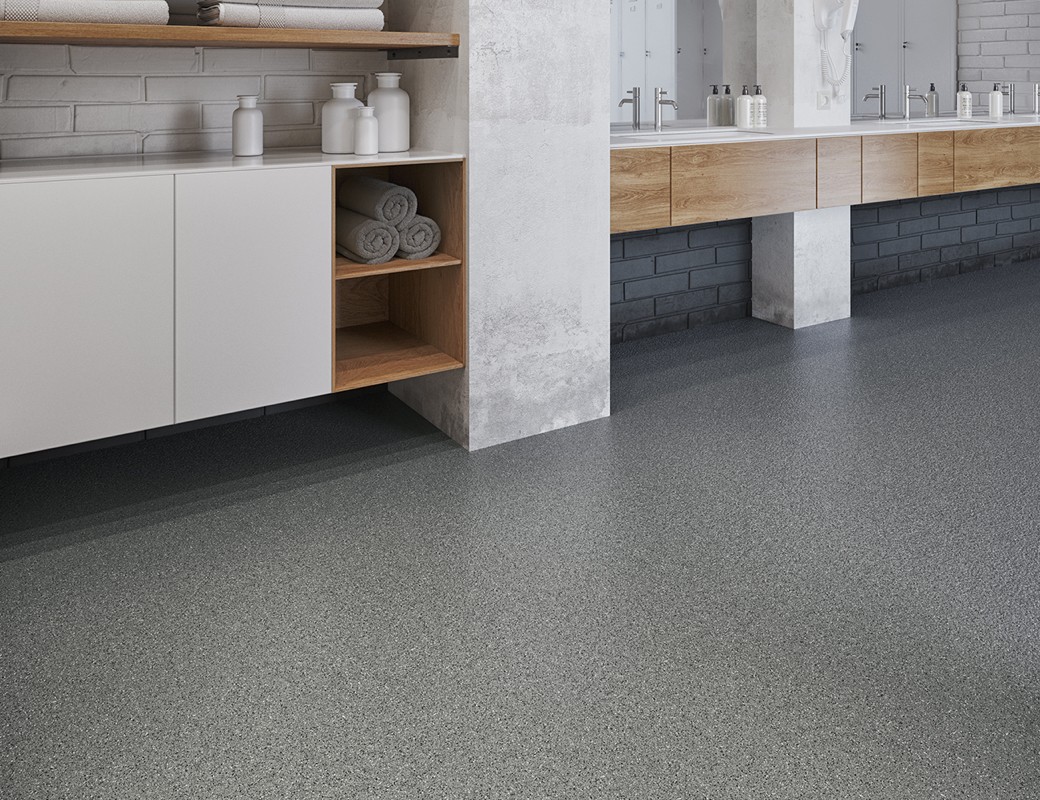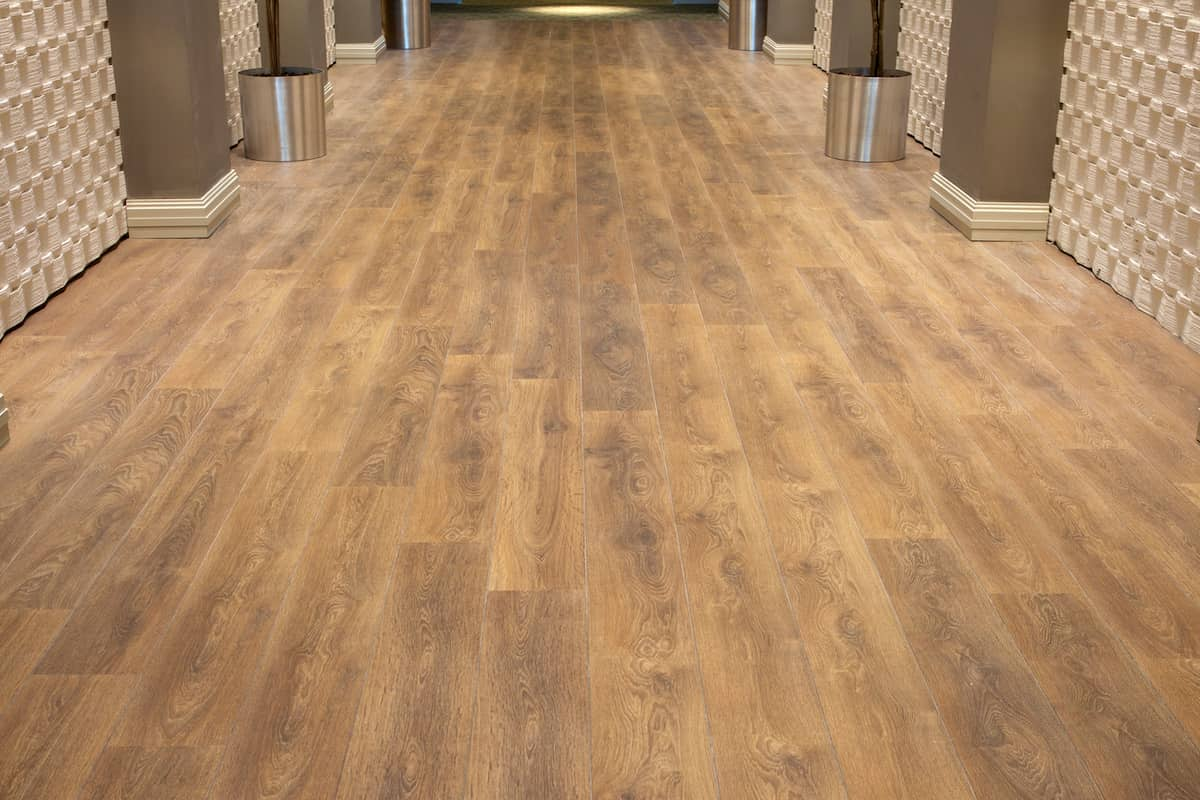Commercial Bathroom Vinyl Flooring

Commercial bathroom vinyl flooring is a popular choice for businesses and institutions due to its durability, affordability, and ease of maintenance. This flooring option is designed to withstand heavy foot traffic, moisture, and cleaning chemicals, making it ideal for high-traffic areas like restrooms, locker rooms, and showers.
Durability and Longevity
Vinyl flooring is known for its exceptional durability and longevity, making it a long-term investment for commercial bathrooms. Unlike other flooring materials like ceramic tiles or natural stone, which can crack or chip under heavy foot traffic, vinyl flooring is resilient and can withstand constant wear and tear. It also holds up well against scratches and dents, ensuring its aesthetic appeal remains intact for years.
Water Resistance and Mold/Mildew Resistance
Commercial bathroom vinyl flooring is specifically engineered to withstand moisture and prevent the growth of mold and mildew. The flooring is waterproof and features a non-porous surface that prevents water from seeping in, reducing the risk of damage and creating a hygienic environment.
Ease of Maintenance and Cleaning
Maintaining a clean and hygienic bathroom is essential, and commercial vinyl flooring makes this task effortless. The smooth surface of vinyl flooring repels dirt and grime, and it can be easily cleaned with a mop and mild cleaning solution. This makes it a practical choice for busy commercial spaces, where frequent cleaning is required.
Styles and Designs
Commercial bathroom vinyl flooring is available in a wide variety of styles and designs to complement any bathroom decor. From classic solid colors to contemporary patterns and realistic wood-look designs, there is a vinyl flooring option to suit every aesthetic preference.
Slip Resistance and Safety
Safety is paramount in commercial bathrooms, and vinyl flooring plays a crucial role in preventing slips and falls. Commercial vinyl flooring is often textured or embossed to provide a slip-resistant surface, especially in wet areas like shower stalls and around sinks. This textured surface increases traction and reduces the risk of accidents.
Cost-Effectiveness
Commercial bathroom vinyl flooring is a cost-effective solution compared to other flooring options. While the initial cost of installation may be lower than other materials, vinyl flooring also boasts a longer lifespan, reducing the need for frequent replacements.
Choosing the Right Commercial Bathroom Vinyl Flooring

Selecting the perfect commercial bathroom vinyl flooring involves considering factors like durability, aesthetics, and maintenance. Choosing the right type can significantly impact the overall look, feel, and functionality of your bathroom.
Types of Commercial Bathroom Vinyl Flooring
The various types of commercial bathroom vinyl flooring offer diverse benefits and drawbacks. Understanding these differences will help you make an informed decision.
- Sheet Vinyl: Sheet vinyl is a single, continuous piece of vinyl flooring that is rolled out and installed. It is a popular choice for commercial bathrooms due to its affordability, durability, and ease of maintenance.
- Vinyl Tile: Vinyl tile is a more versatile option than sheet vinyl, as it can be installed in a variety of patterns and designs. It is also available in a wide range of colors and textures.
- Luxury Vinyl Tile (LVT): LVT is a high-end vinyl flooring option that offers a realistic wood or stone look. It is also very durable and easy to maintain.
Comparing Commercial Bathroom Vinyl Flooring Options
A table summarizing the pros and cons of each type of commercial bathroom vinyl flooring will help you understand their key characteristics.
| Type | Pros | Cons |
|---|---|---|
| Sheet Vinyl |
|
|
| Vinyl Tile |
|
|
| Luxury Vinyl Tile (LVT) |
|
|
Selecting the Appropriate Vinyl Flooring Based on Traffic Levels and Specific Bathroom Needs
The type of vinyl flooring you choose should be based on the traffic levels and specific needs of your bathroom. For example, a high-traffic bathroom in a commercial building will require a more durable flooring option than a low-traffic bathroom in a residential setting.
- High-traffic bathrooms: Consider sheet vinyl or LVT, as they are both durable and easy to maintain.
- Low-traffic bathrooms: Vinyl tile is a good option for low-traffic bathrooms, as it is more affordable than LVT and offers a variety of design options.
- Bathrooms with specific needs: If your bathroom has specific needs, such as a need for slip resistance, consider a vinyl flooring option that is specifically designed for those needs.
Considering the Overall Design Aesthetic of the Bathroom
The vinyl flooring you choose should complement the overall design aesthetic of your bathroom. This means considering factors such as the color scheme, the style of the fixtures, and the overall ambiance you want to create.
- Color scheme: Choose a vinyl flooring color that complements the other colors in your bathroom, such as the walls, the fixtures, and the towels.
- Style: Choose a vinyl flooring style that complements the style of your bathroom, such as modern, traditional, or contemporary.
- Ambiance: Consider the overall ambiance you want to create in your bathroom. For example, if you want to create a spa-like ambiance, you might choose a vinyl flooring option with a natural stone look.
Measuring the Bathroom Space Accurately for Vinyl Flooring Installation
Accurate measurement is crucial for ensuring a seamless vinyl flooring installation.
Measure the length and width of the bathroom, and add an extra 10% to account for waste.
- Measure the length and width of the bathroom: Use a measuring tape to measure the length and width of the bathroom, making sure to measure to the nearest inch.
- Add an extra 10% to account for waste: When calculating the amount of vinyl flooring you need, add an extra 10% to account for waste. This will ensure that you have enough flooring to cover the entire bathroom, even if you make a few mistakes during installation.
Installation and Maintenance of Commercial Bathroom Vinyl Flooring

Installing and maintaining commercial bathroom vinyl flooring properly ensures its longevity and enhances the aesthetics and functionality of the space. This section will provide a comprehensive guide to installation and maintenance, ensuring a successful project.
Installation of Commercial Bathroom Vinyl Flooring
A well-planned and executed installation is crucial for a durable and aesthetically pleasing vinyl flooring. This involves proper subfloor preparation, accurate measurement and cutting, and secure installation.
Subfloor Preparation
The subfloor serves as the foundation for the vinyl flooring. Proper preparation ensures a smooth and even surface, preventing unevenness and potential damage to the flooring.
- Clean the subfloor: Remove any debris, dust, or loose particles using a vacuum cleaner or broom. Ensure the subfloor is free from contaminants that could affect adhesion.
- Repair any imperfections: Fill in cracks, holes, or unevenness using a suitable patching compound. Ensure the patching compound is compatible with the subfloor material and allows for proper drying time.
- Ensure levelness: The subfloor should be level to prevent unevenness in the vinyl flooring. Use a level to check for any discrepancies and correct them using a leveling compound if necessary.
- Moisture barrier: In bathroom spaces, a moisture barrier is essential to prevent water damage. Apply a moisture-resistant membrane over the subfloor, ensuring proper overlap and sealing at seams.
Cutting and Fitting Vinyl Flooring
Cutting and fitting vinyl flooring requires precision to ensure a seamless finish. The following steps provide guidance for accurate cutting and installation:
- Measure and plan: Accurately measure the bathroom area and create a layout plan for the vinyl tiles. Consider the pattern and direction of the tiles for a visually appealing result.
- Use a sharp utility knife: A sharp utility knife is essential for precise cutting. Use a straight edge as a guide for clean and straight cuts.
- Cut tiles to fit: Cut the vinyl tiles to fit the specific areas of the bathroom, leaving a small gap between tiles for expansion and contraction.
- Secure tiles with adhesive: Use a high-quality vinyl flooring adhesive for secure installation. Apply the adhesive to the subfloor according to the manufacturer’s instructions.
- Press down firmly: Press down firmly on the tiles after applying the adhesive, ensuring proper adhesion and a smooth surface.
Sealing Edges of Vinyl Flooring
Sealing the edges of vinyl flooring prevents water from seeping in and causing damage.
- Use a sealant: Apply a high-quality vinyl flooring sealant to the edges of the tiles, ensuring a water-tight barrier.
- Caulk around fixtures: Use a silicone caulk to seal the gaps around toilets, sinks, and showers, preventing water from penetrating beneath the flooring.
- Apply sealant to expansion gaps: Seal the expansion gaps between the tiles and the walls, using a flexible sealant that allows for movement.
Maintenance of Commercial Bathroom Vinyl Flooring
Regular cleaning and maintenance are crucial for preserving the appearance and extending the lifespan of commercial bathroom vinyl flooring.
Cleaning Procedures
- Sweep or vacuum regularly: Remove dirt, debris, and dust regularly using a broom or vacuum cleaner with a soft brush attachment.
- Use a mild cleaning solution: For regular cleaning, use a mild detergent solution mixed with warm water. Avoid harsh chemicals or abrasive cleaners that can damage the vinyl surface.
- Mop the floor: Use a mop with a soft cloth or sponge to clean the floor, applying a gentle pressure to avoid scratching the surface.
- Dry the floor thoroughly: After cleaning, ensure the floor is completely dry to prevent moisture buildup and potential damage.
Recommended Cleaning Products
- Mild detergent: Use a mild detergent specifically designed for vinyl flooring. Avoid harsh chemicals that can damage the surface.
- Distilled white vinegar: Diluted white vinegar can be used as a natural cleaning agent for removing stains and disinfecting the floor.
- Baking soda: Baking soda can be used as a mild abrasive for removing stubborn stains.
Regular Inspection and Maintenance
Regular inspection and maintenance are essential for identifying potential issues and addressing them promptly, preventing further damage and ensuring the longevity of the flooring.
- Check for loose tiles: Regularly inspect the flooring for any loose tiles. Secure any loose tiles with adhesive or replace them if necessary.
- Inspect for scratches or damage: Check for any scratches or damage to the vinyl surface. Repair or replace damaged areas as needed.
- Reseal edges: Periodically reseal the edges of the flooring to maintain a water-tight barrier.
- Replace worn-out tiles: Replace worn-out tiles to maintain a consistent appearance and prevent further damage to the flooring.